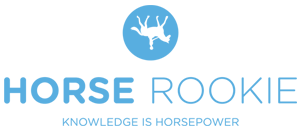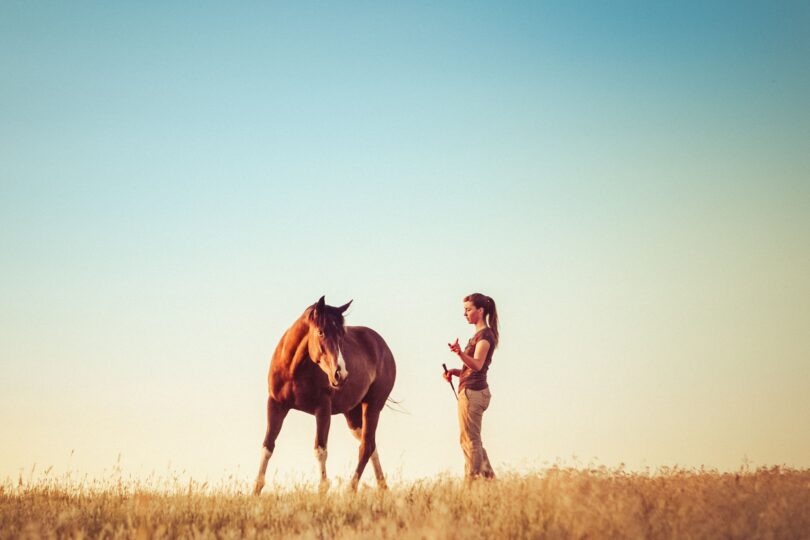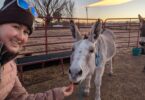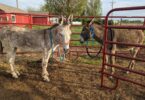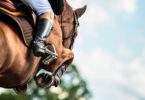Training Your Horse the Happier, Healthier Way
As a youngster, my Percheron cross mare would not leave the yard to go out for a trail ride. She was extremely buddy sour and would rear and spin in her effort to stay close to her friends.
I was almost at the end of my tether when I decided to give positive reinforcement training a go. The change was instant! If there was one thing she loved more than the safety of her herd, it was food.
In exchange for a few chunks of carrots, she’d do almost anything, including leaving the yard. Nine years on, and we’re still enjoying solo trail rides together!
Positive reinforcement training is a great way of solving behavioral problems, teaching tricks, and helping your horse master complex skills or new behaviors. It’s by no means a cure-all and does have a few limitations, but it’s a far more effective way of training than using punishment or negative reinforcement.
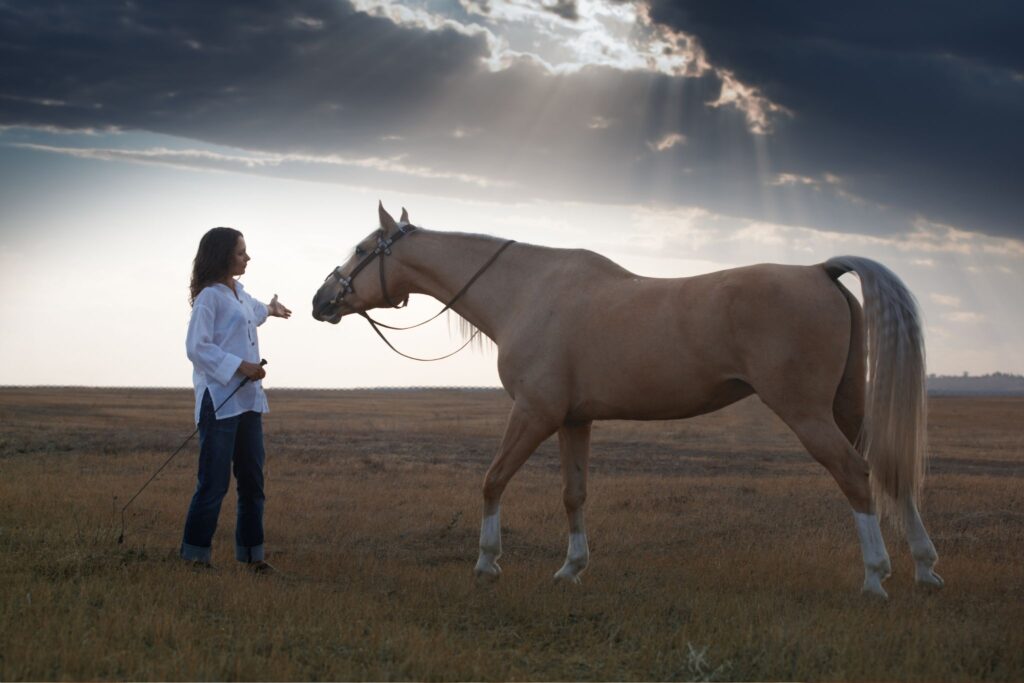
Source: Canva
Positive Reinforcement: What does it mean?
Positive reinforcement involves rewarding good behavior with a positive experience, like a treat or some other type of reward, so the horse is more likely to repeat that behavior in the future.
The reward can be anything from giving your horse a carrot when he comes to the gate to allowing your horse to rest after completing a particularly tricky combination of jumps.
Speaking Horse: A Prerequisite to Horse Training
Before you can teach your horse anything, you need to learn to speak horse. That doesn’t necessarily mean understanding every vocalization they make, but it does mean understanding their body language and cues.
In positive reinforcement training, we want a horse to be relaxed and cooperative so need to know what those emotions look like.
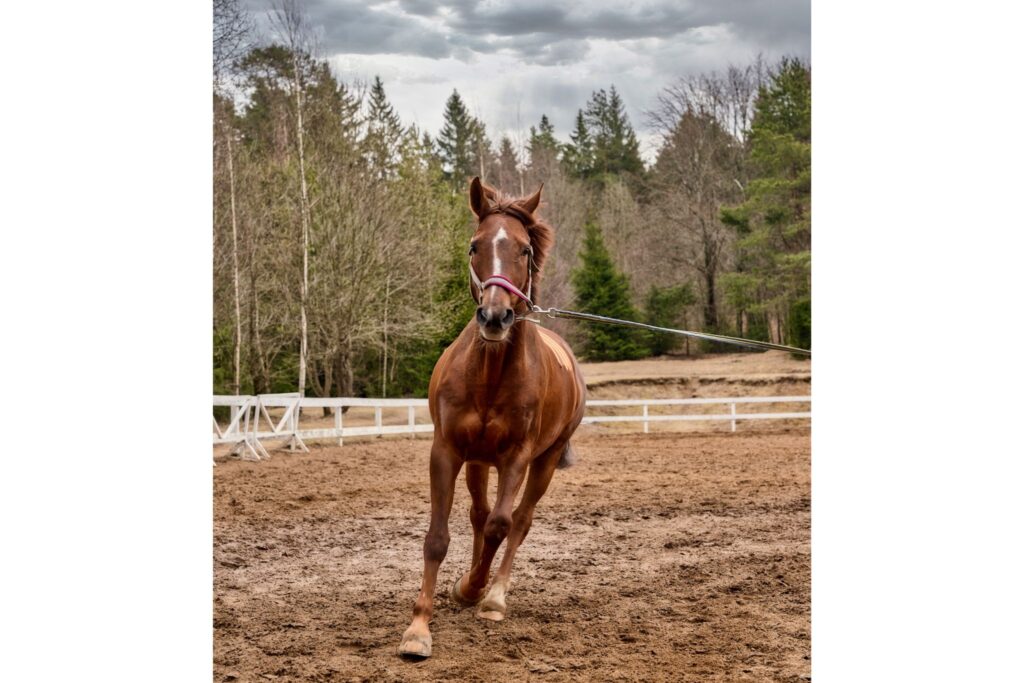
Source: Canva
We also want to avoid causing a horse so much distress and discomfort that he exhibits unwanted behaviors such as rearing, barging into us, or planting his feet. To achieve that, we need to recognize the subtle changes that act as precursors to such behaviors.
For instance, if my mare tosses her head, I know she’s getting impatient and will, in a moment or two, attempt to barge past me. I prevent that from happening by providing her with stimuli in the form of a target, and reengaging her brain.
Horse Training Basics
Some horse trainers use gadgets and devices to achieve their goals, but these are superfluous.
The only things you really need to successfully train a horse using positive reinforcement are:
- Consistency
- Repetition
- Patience
Animals that Benefit from Positive Reinforcement Training
Any animal that is food-oriented will benefit from positive reinforcement training, and it’s proved particularly effective with:
- Horses
- Donkeys
- Dogs
- Pigs
Definitions
R+
R+ is another term for positive reinforcement.
It is more commonly used in behavioral psychology, but when applied to horse training techniques, is generally used to indicate an approach that encourages the horse to offer different behaviors without stimulus or pressure.
In other words, when the horse offers the correct behavior, he’s rewarded; when he offers the wrong one, nothing happens.
Negative Reinforcement
Negative reinforcement involves removing something the horse dislikes when he performs a desirable action.
Many horse trainers use pressure and release techniques that are based on negative reinforcement. When the horse moves into the pressure, the trainer removes that pressure, thereby rewarding the horse.
Positive Punishment
Traditional horse training methods often utilize positive punishment, applying an unwanted stimulus when the horse displays undesirable behavior.
For instance, if a horse refuses to move forward, the trainer applies pressure with a whip or spurs. If he refuses to stop, he’s punished with aggressive pressure on the bit.
Clicker Training
Clicker training is almost synonymous with positive reinforcement training and involves using a clicker to create a bridge signal.
In clicker training, you reward the correct behavior first by clicking your clicker and then by offering a reward. In time, the horse will associate the clicker’s click with the reward, and the need for an actual treat or scratch diminishes.
Hearing the click becomes reward enough.
Positive Reinforcement Training: Step by Step
Before you start positive reinforcement training, you’ll need the following things:
- A pouch for your food reinforcers (I use an old fanny pack, which works relatively well, although accessing the treats quickly can be challenging).
- Food reinforcers or treats examples: check out our article on the 10 Top Treats for Training Horses “The Nice Way.”
- A clicker (this is optional—you could simply choose a word or whistle to act as your bridge signal)
Step 1
At the start of your positive reinforcement journey, it’s a good idea to have some kind of structure between you and your horse.
- If you have a stall or stable, put your horse inside and stand by the entrance. If that’s not viable, stand on the other side of a fence.
- The only reason for this is to stop your horse from crowding you when he first realizes you have mouth-watering treats upon your person!
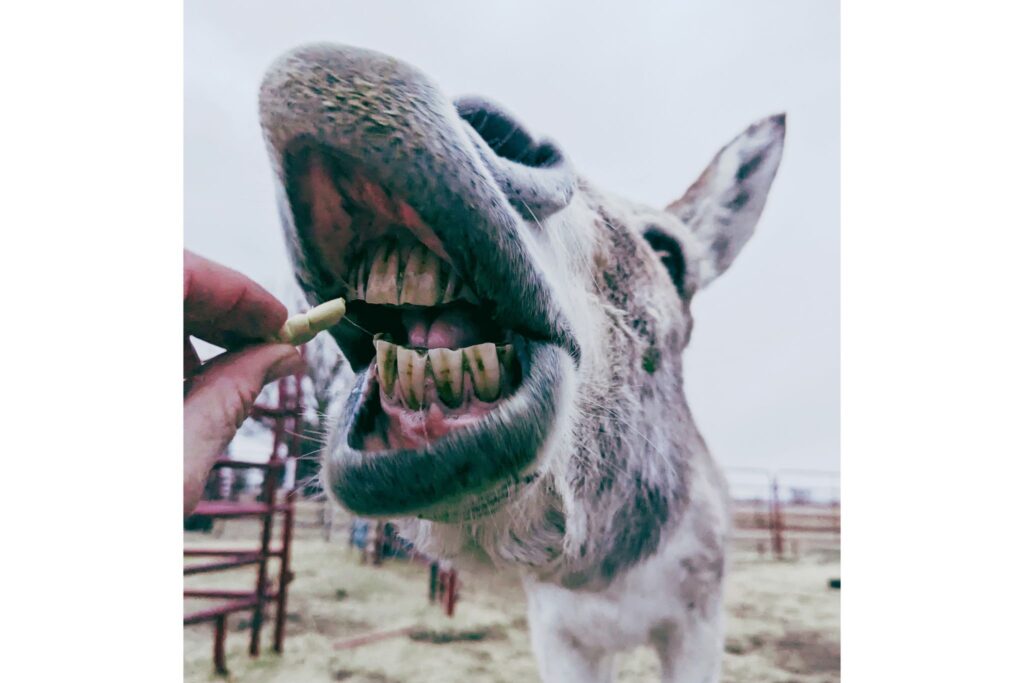
BLM Burro Moon eating a cookie. Photo Cred: Blue & Moon Burros
Step 2
Now you’re in a safe space, you can teach your horse how to earn his rewards and how to take them calmly and safely.
- Before you start, make sure your horse is focused on you.
- Now, ask for a specific behavior. The easiest way to do this is to place a treat in your hand, wrap your fingers around it in a fist, and hold it out in front of your horse’s nose.
- He’ll quickly pick up the smell of the treat and move his nose towards your hand. When his nose touches your hand, click your clicker, and then open your fingers and give him the treat.
- You’ve now taken the first step towards targeting—a training technique in which your horse touches a specific target with his nose.
Step 3
Once your horse is performing the behavior you want and receiving his treats gently without crowding or bullying you, you can start teaching him more complicated behaviors.
- Start by asking him to target your hand in increasingly challenging positions.
- Instead of holding your fist close to his nose, lift it high up in the air or behind his shoulder.
- Every time he touches your hand, you click and reward.
- In time, you can get him performing a wide range of movements and stretches that will increase his suppleness and mobility, as well as his obedience.
Troubleshooting Positive Reinforcement Training Issues
One of the biggest problems I had when I started using positive reinforcement techniques was my greedy horse getting increasingly demanding about her rewards. She didn’t seem to understand that she couldn’t just help herself to the contents of my fanny pack but needed to perform a specific behavior to earn one.
To combat this, I withheld the treats whenever she was crowding me and rewarded her every time she moved out of my space and away from the treat pouch.
Tips for R+ Success
Keep your sessions short, working with your horse for just 5 to 10 minutes a day. This keeps the lessons fresh, helps your horse stay focused, and means you don’t give him so many treats that he starts gaining weight!
Repeat your lessons frequently, using every opportunity you have to reinforce good behavior. You can, for example, reward your horse for coming to you in the field or for walking quietly on the halter when you bring him in for breakfast.
Take small steps and break behaviors down into small chunks that are easier for your horse to digest.
For instance, to train my horse to leave the yard, I started with target training in the stall. Once she was constantly touching my hand with her nose, I started performing the same action out in the open. We’d take a few steps together, and then I’d hold out my fist and ask her to target it.
After a few sessions, we took this lesson outside and started walking away from the yard, stopping every few strides to target the hand again and receive her reward. This approach kept her focused on me (and the treats), helping her overcome her anxiety about leaving the herd.

Source: Canva
Frequently Asked Questions
Q: Does positive reinforcement work with horses?
When done correctly, positive reinforcement works with all horses. If it’s not working, there could be several reasons for it. For instance, if the horse’s behavior is caused by pain or discomfort, positive reinforcement won’t be able to fix it.
Like any training technique, positive reinforcement takes time to master, and we all make mistakes along the way. Finding an expert to offer a second opinion is one of the most effective ways of correcting these mistakes, although there are some excellent videos on YouTube that could help you solve your problems.
Q: What are positive reinforcement treats for horses?
Positive reinforcement treats are anything that your horse will enjoy. My mare loves banana skins so, if I want her to learn something new, I’ll chop banana peels up into pieces and use those as a reward. My other horse is borderline obese so I avoid food treats altogether. Instead, I offer him a much-loved ear scratch in return for good behavior.
Q: What is positive reinforcement vs negative reinforcement in horse training?
Positive reinforcement involves rewarding good behavior with something desirable, like a treat or a scratch, whereas negative reinforcement involves removing something the horse dislikes, like pressure.
Q: What is clicker training?
Clicker training is a type of positive reinforcement training in which a clicker is used to create a bridge signal that links good behavior with positive rewards.
Q: What is positive reinforcement vs natural horsemanship?
Natural horsemanship encompasses a range of different training techniques and may include some elements of positive reinforcement and negative reinforcement. Neither approach utilizes punishment or fear-driven methods of training.
Q: What is R+ training in horses?
R+ training is another term for positive reinforcement, although it may be seen as a more passive training technique. With R+ training, you often wait for the horse to act and then reward him for making the correct choice. With positive reinforcement training, you may help him make that choice by guiding him with a target.
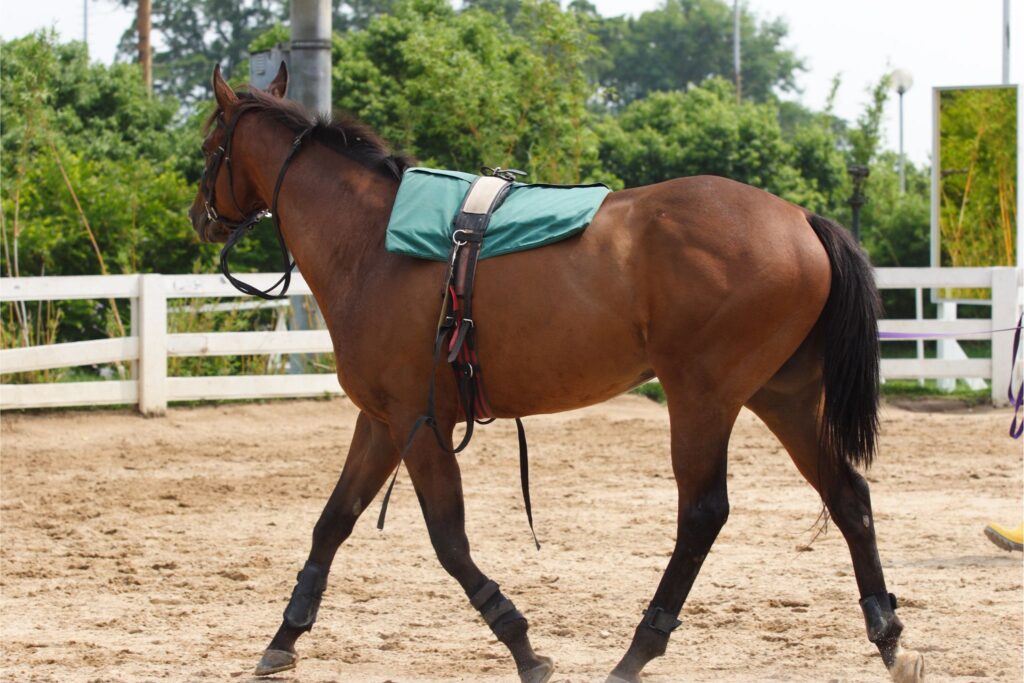
Source: Canva
Parting Thoughts
Positive reinforcement training has helped me overcome specific behavioral issues in my horses and achieve simple goals such as riding out alone, teaching a horse to open gates, and getting her to back up and give me space.
I haven’t explored the full potential of it by any means, but do know people who’ve taught their horses fun tricks like bowing or kissing on command, and useful skills like loading onto a trailer at liberty or picking up hooves on cue.
You can use positive reinforcement as a problem-solving technique or as a way to further your horse’s education. You can even use it in the saddle to teach your horse to line up at a mounting block or select the right lead when cantering.
Whether you’re competing at a national level or just pottering around the country lanes, positive reinforcement can help you achieve your horse-riding goals and create a safer and more enjoyable experience for you and your horse.
P.S. Enjoy this article? Trot on over to:
- 6 Easy Clicker Training Exercises for Horses (With Pictures)
- 9 Best Online Equine Courses (Care, Training, Riding)
- Pressure and Release Training for Horses that Won’t Listen
- Feral to Finished: Training the Wild Mustang
- 25 Best Books for Horse Training
Sources:
Positive vs Negative Reinforcement for Horses
Positive Reinforcement: Where Does it Fit in Horse Training?
